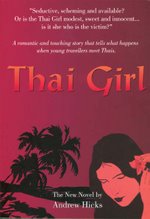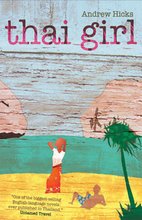
The Cambodian flag flies peaceably above the first temple at Preah Vihear, known to the Thais as Khao Phra Viharn and I cannot now believe that blood is again being spilled in this futile border dispute. The conflict has no real substance but is merely the result of extreme nationalism being fanned by politicians on both sides of the border seeking to distract attention from internal problems and to impress the electorate. It is so ironic that two Asian nations are scrapping over a border that was imposed on them by French colonial Indo-China in an unequal treaty that the World Court then had to interpret.

Bullet holes from the Khmer Rouge era are clearly visible.

The biggest losers are the traders for whom the temple was a livelihood.

A sacred place, it should be enjoyed as a shared heritage.




I wrote the following article in October 2008, never thinking that the dispute would gather momentum for so long. Nothing has changed. Things have only got worse and more blood has been spilled. When will everyone come to their senses?
Thailand’s Temple of Doom?
I am so sorry that Preah Vihear, the Cambodian temple on the Thai border has once again become a political football, souring relations between the two countries.
Called Khao Phra Viharn in Thai, it is just two hours from where we live and I keep on going back as for me it is one of the most magical places in the world. I’ve been there ten times in the last few years and I want to go another ten.
Though the Khmer temples at Angkor are grander in scale, the natural setting of Khao Phra Viharn is beyond compare. It sits at the top of a cliff and as you stand there looking down at hundreds of miles of Cambodian plain and mountain spread before you, just behind you a thousand year symphony in stone, this must be one of the most remarkable places in the world.
The temple often acts as a lightning rod for tensions between Thailand and Cambodia as it is the Cambodian and not the Thai flag that flies over it. In 1962 the International Court of Justice decided a border dispute referred to it by Cambodia, ruling that the temple was within Cambodia and that the Thais must withdraw their troops. The Thais were outraged and have never forgotten this slight from the minnow to the east.
Now managed by the Cambodians in a pleasant state of sleepy under-development, little girls and old ladies wander through the ruins beseechingly selling postcards and cold drinks and whenever there are tensions between the two countries, the Cambodians assert their authority and close the temple to visitors. Whether the pretext is pollution flowing into Thailand from the stream below the temple or a Thai helicopter allegedly overflying Cambodian airspace, it always spells doom for the poor vendors who abruptly lose their livelihood.
The decision of the Court was that maps drawn up during the French colonial era and at least implicitly accepted by the Thais placed the temple in French Cambodia notwithstanding that geographically it is within Thailand. Standing on top of a gently rising escarpment and cut off from Cambodia by the cliff, it must always have been approached from the Thai plateau.
The usual presumption is that international borders follow the watershed. In this case the watershed is the cliff edge, which would put the temple within Thailand, but the Court concluded in this case that the treaty ruled otherwise. Unequal treaties by which colonial powers sought to extend their territory are nonetheless taken to be valid.
The latest saga is that Cambodia has now made an application to UNESCO for the listing of the temple as a World Heritage Site and again the Thais are outraged. The new Thai government seems prepared to co-operate but the opposition Democrats have made it a major issue in domestic politics, attempting to bring down the government. Charging that a deal had been done to allow the Cambodian application proceed in return for a casino concession for Thaksin Shinawatra, the shadowy power behind the PM, the opposition has obtained a court injunction to stop the government supporting the application for listing and has stirred up extreme nationalist fervour against Cambodia.
The whole conflict is damaging for all sides. If the Thais could only accept the reality of Cambodian sovereignty over the temple and support an application for listing, there would be benefit for all, especially for the poor vendors in the temple.
The approach to the temple from the Thai side is scheduled as a National Park so the Thai authorities already collect entry fees equivalent to those charged by the Cambodians for the temple itself. As the access and the only population centres are on the Thai side, the benefit of virtually all associated tourism primarily benefits the Thais. The Thai province of Si Saket is one of the poorest in the country and desperately needs its one significant tourist attraction to be promoted by harmonious progress to a World Heritage listing.
The current dispute could now close the temple and sour relations between the two countries for years, thus doing considerable self-inflicted damage to Thailand.
The more intransigent the Thais prove to be, the more the Cambodians will try to develop the approaches to the temple from their own side. There is talk of foreign funding for a major road through the jungle, of building a cable car up the cliff and, perish the thought, of casinos in the vicinity.
When I first visited the temple seven years ago, the view from the top was totally untouched by humanity. Though the jungle had perhaps been stripped of the best timber, there was not a road or a man-made structure in view for a hundred miles in any direction. Now already there is a dirt road with trucks crawling along it like ants and small shanty towns at the intersections. I fear what the future will bring. The great charm of the temple is that it remains under-developed and innocent, but all that soon may change.
In recent times it has been the focus of violent conflict as it was one of the last strongholds held by the Khmer Rouge long after the fall of Pol Pot, the genocidal leader of Cambodia. Indeed one of their cannons still stands high on the hill facing back towards Thailand.
Now once again the atmosphere is laden with doom and it all seems so sad. As I walk up the steep stone avenue towards the temple steadfastly refusing all offers of postcards, the little girls gaze hopefully at me. ‘Okay, mister. Not buy postcard now, but maybe later come back.’
Maybe but maybe not.
My heart usually melts for them or for the boy who in competent English tells me his life ambition is one day to go to school. My hand slips into my pocket for a few baht, always to be rewarded with a million dollar smile.
The temple and the simplicity of these people thus enriches me and all who go there, while the barrenness of racist nationalism and partisan politics that is now rearing its ugly head diminishes all of us. In this most beautiful of places the petty behaviour of politicians could not be more grotesque.





15 comments:
not so sure about that..
Well it seems hard to conclude anything but that the international court is right. Sure you can argue that the French were cheating at the time, but what if Cambodia decided the border should have been two hills further towards Thailand? There'd be another watershed and the Cambodians would have easy access to the temple. All the border was agreed between colonial France and Siam, not just that small part of it. Opening that can of worms just leads to constant war. If we want to move beyond that we have to accept borders the way they are now and resolve disagreements peacefully. I suspect very few borders anywhere in the world have come about by mutual agreement, free from any pressures.
BTW: I was just reading about this temple in your book as the fighting started. I finally got hold of it.
Stefan, Thanks for your comment.
I hope you're enjoying MY THAI GIRL AND I.
You're right. the Court of Justice at the Haguie is a court of law that has to interpret treaties as it finds them. In ruling on the Cambodian temples case (which unknowingly I studied as a law student all too long ago)it was not deciding who ought to have the temple but what the two sides had agreed all those years ago, even though Cambodia was under colonial rule.
Since the idea of the nation state emerged and the world was carved into defineable bits during the colonial era, it cannot all go back into the melting pot.
Thais do themselves no favours if they continue to harp on about the 'lost territories'. Their country has been very successful and is economically strong and should therefore be able to live with its smaller neighbours.
It will do itself great harm in the perception of the world if it does not do everything to settle this dispute. The temple belongs to everyone and as the Cambodians are keen to receive visitors from the Thai side, there is a common interest in co-operating to make a success of its designation as a World Heritage Site.
How ironic that Thaksin's initial signing of a simple memorandum of understanding to work with the Cambodians was in fact exactly the right thing to do.
In the dirty cockpit of Thai politics it was all downhill fromm there on.
Andrew
Hi Andrew - yes I'm enjoying the book immensely. Not sure if I emailed you how I got it? I actually paid for it with Thai Airmiles. I used our surplus miles (which would have expired anyway) to buy a return ticket for a Taiwanese friend of ours. In exchange she happily agreed to buy your book for me.
So I wonder whether amongst your fans I'm the one who paid the most for it (the equivalent of a TPE->BKK flight ticket) or maybe I'm the one who paid the least (airmiles would have expired anyway, plus our Taiwanese friend bought us dinner). Hmmmm.
Stephan,
I'm flattered that you've gone to such lengths to get a copy of MY THAI GIRL AND I. I guess the air miles were not enough for you to fly out to the airport in Bangkok, walk through to departures, buy a copy and get back on a plane!
Your story would win the prize as it is but I've had a few similar ones of people getting travelling friends to buy one. Another guy said he was given a copy in Fiji!
It fascinates me how books are bought at the airport and then fly off around the world and so might pitch up anywhere. I like to think that enough of my books have sold that someone in the world somewhere is always reading them.
Hope all's well with you. Life and family pressures must be allowing you at least some time for reading, even if in salami slices.
Andrew
Why don't you contact Amazon.com and enquire about selling MY THAI GIRL AND I as an e-book?
I am glad to be able to read some opinions that you have. They were very informative and i think borders should be left to the locals or in the hand of the people who actually live there. I was once serving in the USArmy and was puzzeled because of our orders. Our orders were coming from half way around the world and we had little or no say on the matter what so ever. To bad we do not live in a perfect world.
http://thaichickenbuffalo.blogspot.com/
Hi Andrew - well I could have flown to Thailand with these miles (we were in Taipei at the time). However our friend is regularly traveling to Thailand (for fun and for business), so better for her to have a fun vacation than for me to sit in a crowded plane being bored.
Getting traveling friends to get you a copy doesn't count btw: you need to buy them the ticket as well! :-)
Anyway Bangkok -> Fiji is just 9208 km - Bangkok -> Taipei is 2544 km and Taipei -> Munich is 9320km. So my copy of the book traveled 11864 km. ;-)
tanks for posting, i like this, but me from indonesia.
I have been to the temple and it's a real shame that the 2 countries can not come to a sharing agreement over this ancient monument.
Instead they fight and people die on both sides, everybody loses. I believe that many tourists would visit if things were safe and that this would generate a decent income for the locals.
Rick
The entire thing is stupid and an incredibly ridiculous waste of lives.
What fascinates me is Thailand had ZERO interest in the temple until it became a UNESCO World heritage site, yet anyone with more than half a brain can see it belongs to Cambodia - Khmer architecture (built by Cambodians ie: the Khmer) and ON Cambodian land) and er.....it was agreed upon BY Thailand years ago. Shows how much Thailand's 'word' means, doesn't it.
I love Thailand but, on this issue, Thailand is as wrong as wrong can be.
Responding to what you say, Rachel, I feel that neither side comes out of this with any credit. The dispute is a consequence of historical tensions between neighbours becoming entangled in the muddle of internal politics. There is nothing like an external threat to give spurious electoral lustre to a campaigning politician than an apparent threat from an external bogey man.
The temple is geographically part of Thailand and huge areas of Thailand adopted Khmer culture, paying tribute eastwards. But these points are now irrelevant as Thailand was subject to the compulsory jurisdiction of the World Court as a UN member which, interpreting treaties between Siam and French Indo-China, ruled that the temple was within legally Cambodia.
This is a legal fait accompli which Thailand cannot challenge. The overwhelming self-interest of both countries is therefore to work together to make a success of the listing as a World Heritage Site. This could have been one of the best things that has happened to this poor area of North Eastern Thailand for many years rather than the disaster that has now overtaken it.
Perhaps when Thailand has got through its election and things are hopefully more settled, her leaders could take a longer view on the matter genearlly.
Andrew
I THINK THAT BORDERLINE WAS CLEAR WHO IS THE OWNER OF PREAH VIHEAR. CAMBODIA AND THAILAND SHOULD BE COOPERATE AND WORK TOGETHER TO DEMARCATE THE BORDER POINT BY POINT AND LET PEOPLE AT BOTH SIDE LIVE AND BE A GOOD NEIGHBOR FOREVER.
Interesting to say the least...
It's the same problem all over the world where colonial powers have decided where to place borders.
When you look at the straight lines of african and middeleastern borders it's no wonder it leeds to war.
Very sad in my oppinion.
Post a Comment